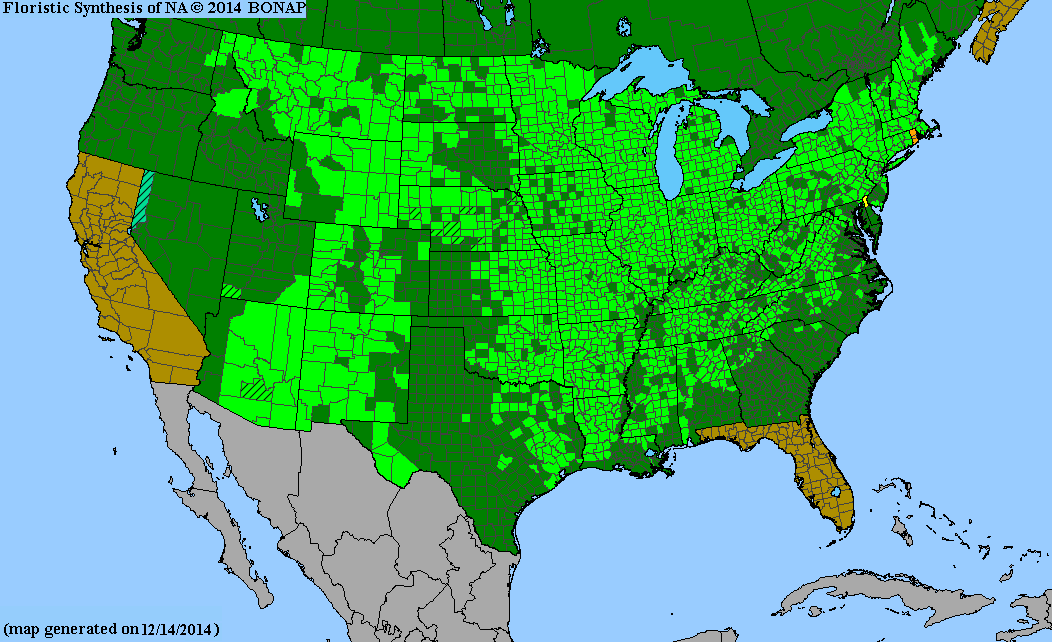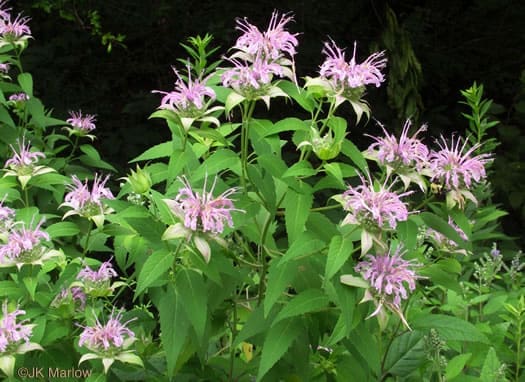Lamiaceae
wild bergamont
Monarda fistulosa
Synonyms
Monarda fistulosa var. typica
Other Common Names
beebalm, eastern bergamont
Plant Type
Herbaceous Wildflower
Typical Size
2-4 ft. tall
2-3 ft. wide
Tolerant of
Deer
Inolerant of
Dry Soil
Propagation
By seed, By cutting, By division
Plant Propagation Notes
Easy to germinate from seed and does not require cold stratification.
Plant Planting Notes
Provide at least 2 ft of space.
Plants/Diseases
Like all monarda species, it is susceptible to powdery mildew. However, this species shows some resistance. Plants should be provided adequate airflow to reduce susceptibility.
Wildlife Benefits
Nectar/pollen source for pollinating insects, Nectar source for hummingbirds
Leaves
The 3-6″ oblong leaves are arranged opposite along the stem and have dentate margins
Flowers
The lavender flowers are tubular
Fruit
Develop in fall and summer
Bark
Stems are square and green.
Toxicity
no known toxicity
Edibility
leaves are edible
Ethnobotanical Use
Oils and teas were used historically for numerous medicinal uses

USDA Hardiness Zones
3, 4, 5, 6, 7, 8, 9
Light Exposure
Full Sun, Part Sun/Shade
Soil Moisture
Medium, Moist
Soil Drainage
Well-drained
Soil pH
Neutral (6.0-8.0), Basic (greater than 8.0)
Native in South Carolina?
Yes
Plant Native Habitat
Moist wooded slopes, edges of calcareous prairies
Global Conservation Status (NatureServe)
Secure (G5)
Federal Conservation Status (USFWS)
Not Listed
Distribution Notes
Rare in the piedmont, but common in the mountains.


